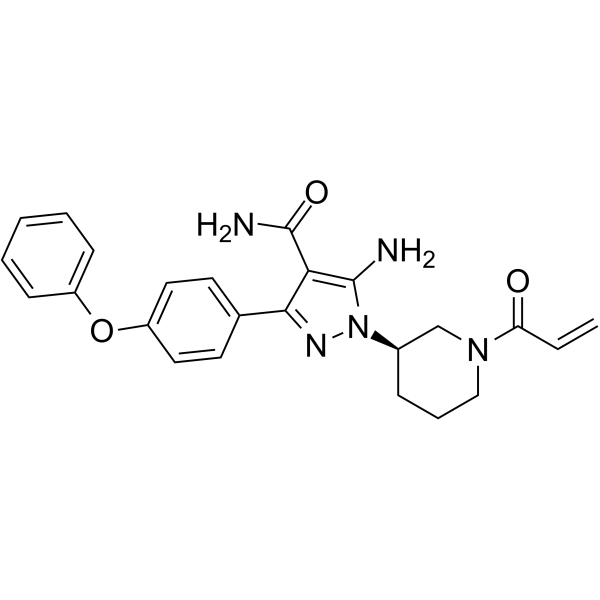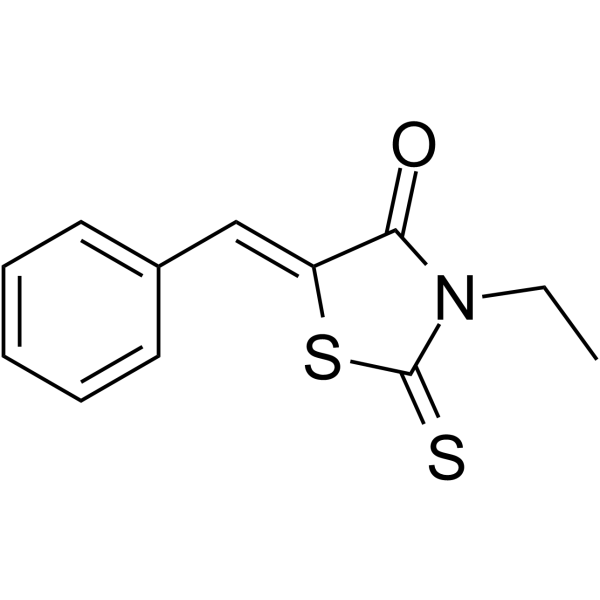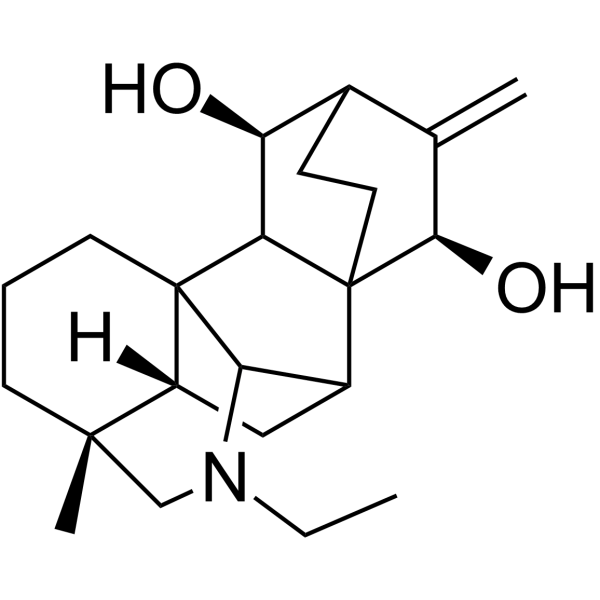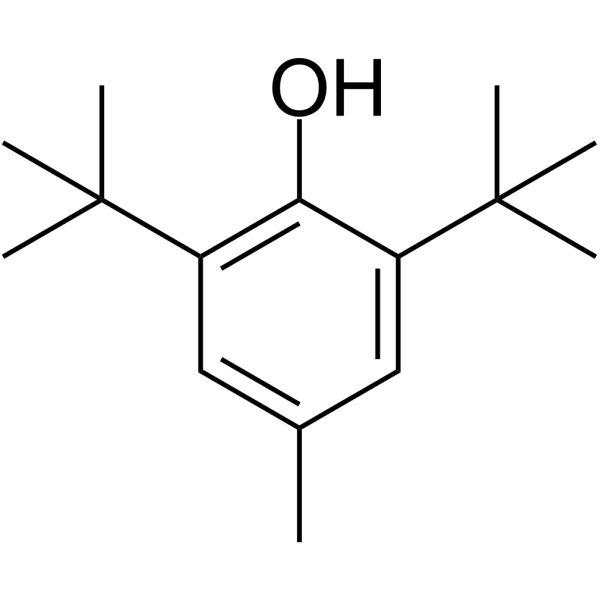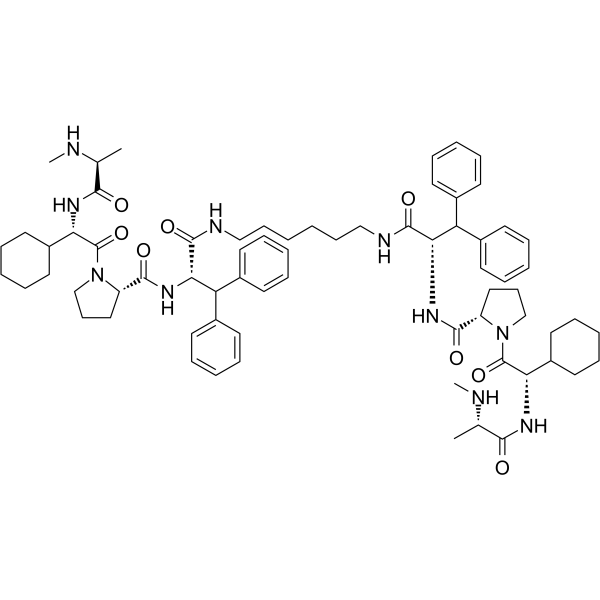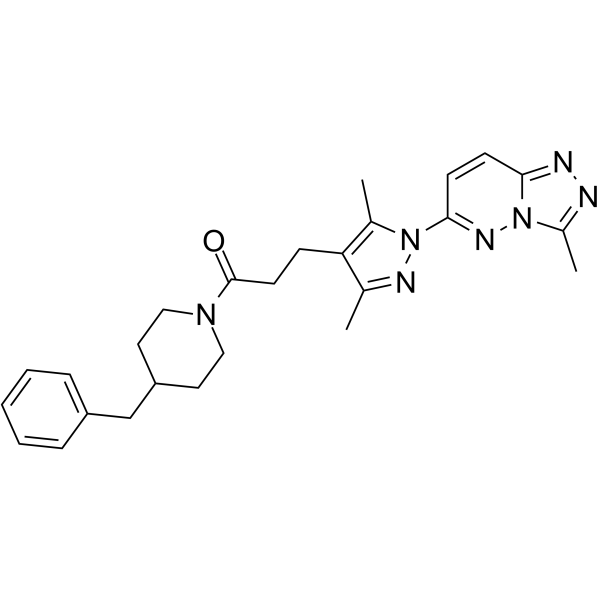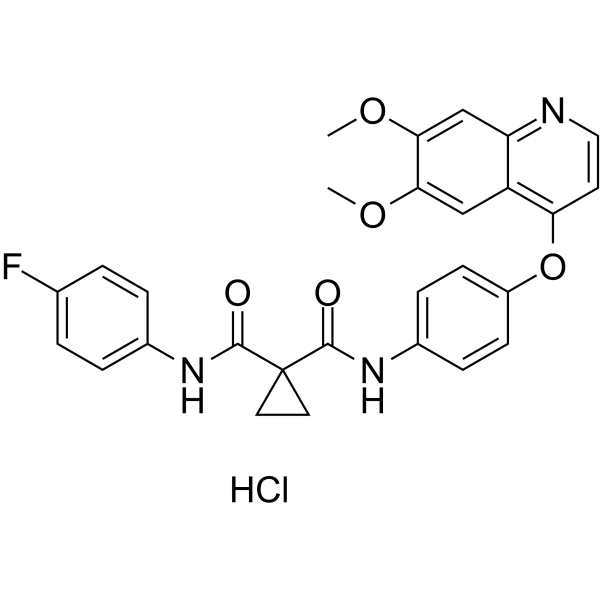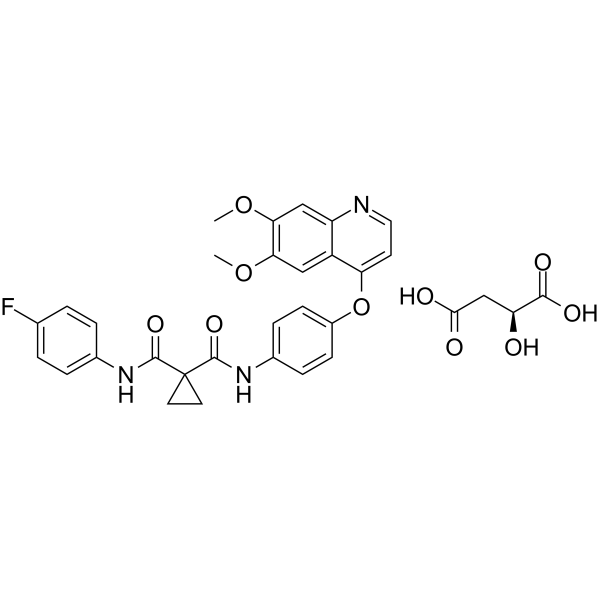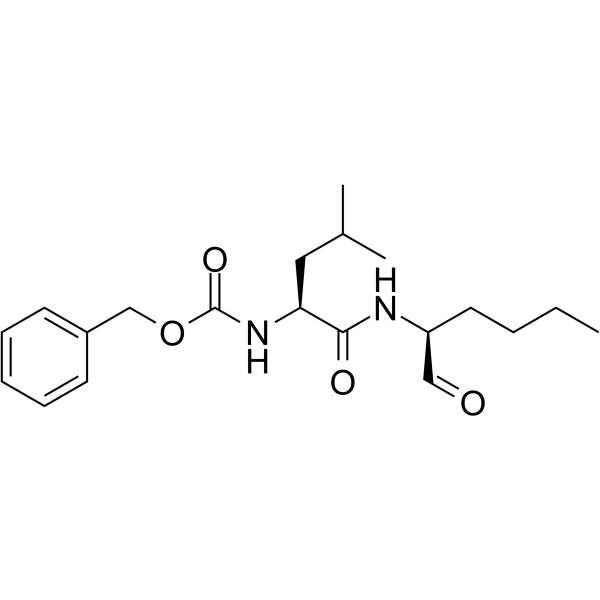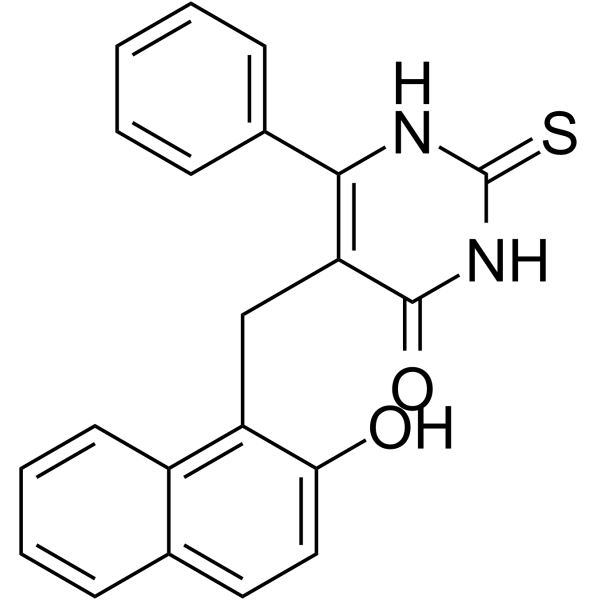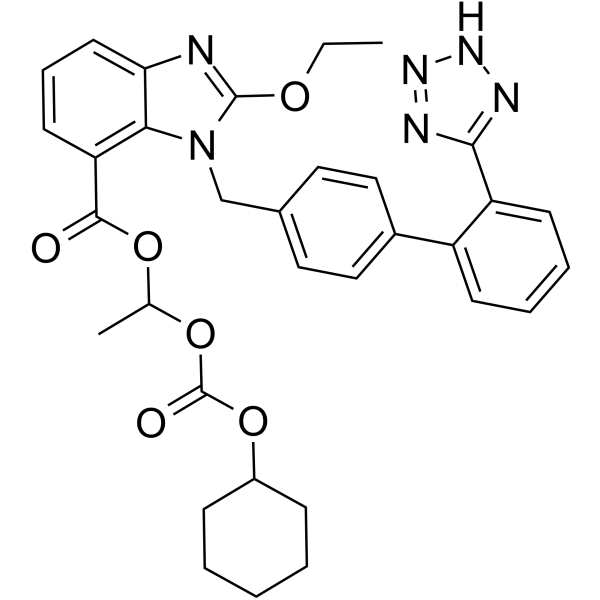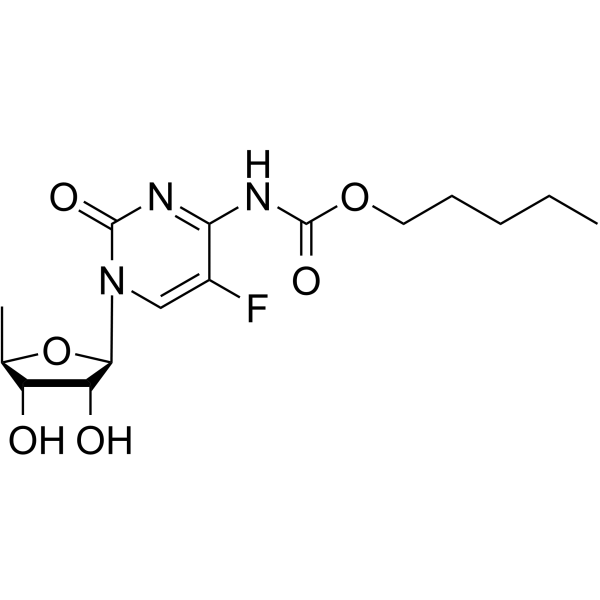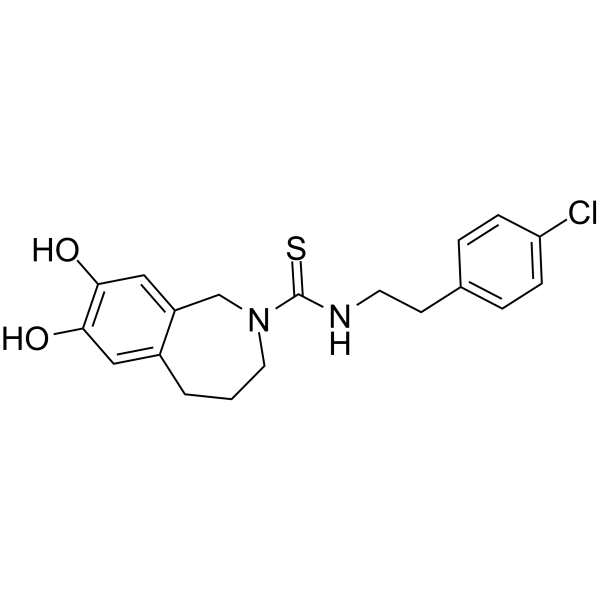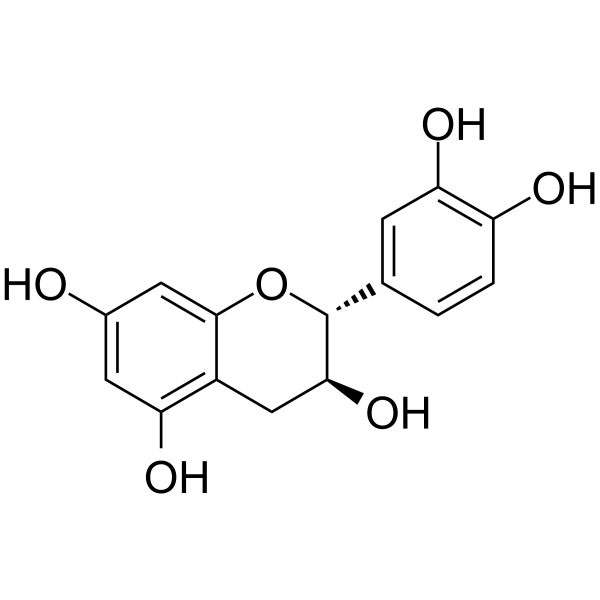|
BP10651
|
Btk inhibitor 2
|
|
|
|
|
Btk inhibitor 2 is a BTK inhibitor extracted from patent US 20170224688 A1 (BGB-3111 analog).
|
|
BP10825
|
BTR-1
|
|
|
|
|
5-Benzylidene-3-ethyl rhodanine(BTR-1) is an active anti-cancer agent. BTR-1 activates apoptosis and induces cell death.
|
|
BP10410
|
Bullatine A
|
|
|
|
|
1. Bullatine A, a diterpenoid alkaloid of the genus Aconitum, possesses anti-rheumatic, anti-inflammatory and anti-nociceptive effects, may be used for the treatment of neurodegenerative diseases such as arthritis.
|
|
BP10337
|
Butylated hydroxytoluene
|
|
|
|
|
Butylated Hydroxytoluene is an organic chemical composed of 4-methylphenol modified with tert-butyl groups at positions 2 and 6. Butylated hydroxytoluene (BHT) inhibits autoxidation of unsaturated organic compounds. BHT is used in food, cosmetics, and industrial fluids to prevent oxidation and free radical formation.
|
|
BP10003
|
BV6
|
|
|
|
|
BV6 is an antagonist of c-IAP1 and XIAP, members of the inhibitors of apoptosis (IAP) family.
|
|
BP10416
|
C25-140
|
|
|
|
|
C25-140 is a small-molecule inhibitor of TRAF6-Ubc13.
|
|
BP10796
|
CA-4948
|
|
|
|
|
Emavusertib is a potent IRAK4/FLT3 inhibtor. CA-4948 with anti-tumor activity.
|
|
BP10429
|
CA-5f
|
|
|
|
|
CA-5f is a potent late-stage macroautophagy/autophagy inhibitor via inhibiting autophagosome-lysosome fusion.
|
|
BP10816
|
Cabozantinib hydrochloride
|
|
|
|
|
Cabozantinib (XL184) is a potent pan-tyrosine kinases inhibitor that inhibits VEGFR2, c-Met, Kit, Axl, and Flt4 (IC50s: 0.035, 1.3, 4.6, 7 and 6 nM).
|
|
BP10169
|
Cabozantinib S-malate
|
|
|
|
|
Cabozantinib S-malate is the s-malate salt form of cabozantinib, an orally bioavailable, small molecule receptor tyrosine kinase (RTK) inhibitor with potential antineoplastic activity.
|
|
BP10077
|
Caffeic Acid Phenethyl Ester
|
|
|
|
|
Caffeic Acid Phenethyl Ester (CAPE) inhibits the activation of nuclear transcription factor NF-kappa B and may suppress p70S6K and Akt-driven signaling pathways, with antineoplastic, cytoprotective and immunomodulating activities. CAPE is the phenethyl alcohol ester of caffeic acid and a bioactive component of honeybee hive propolis. In addition, CAPE inhibits PDGF-induced proliferation of vascular smooth muscle cells through the activation of p38 mitogen-activated protein kinase (MAPK) and hypoxia-inducible factor (HIF)-1alpha and subsequent induction of heme oxygenase-1 (HO-1).
|
|
BP10929
|
Calcium dobesilate
|
|
|
|
|
Calcium dobesilate(CaD) has angioprotective properties and protects endothelial cells partly by ameliorating HG induced inflammation.
|
|
BP10194
|
Calpeptin
|
|
|
|
|
Calpeptin is a potent, cell-permeable calpain inhibitor.
|
|
BP10559
|
Cambinol
|
|
|
|
|
Cambinol is a cell-permeable b-naphthol compound that inhibits the NAD-dependent deacetylase activity of SIRT1/2 (IC50: 56/59 μM, respectively) in a substrate-, but not NAD-, competitive manner. Cambinol inhibits SIRT5 deacetylase activity only at much higher concentrations (IC50 >300 μM) and no inhibitory for the class I and II HDACs. In BCL6-expressing Burkitt lymphoma cell lines, Cambinol-induced apoptosis has been attributed to the hyperacetylation of p53 and BCL6.Cambinol is a potent brain penetrant neutral sphingomyelinase (N-SMase) inhibitor (exosome inhibitor)
|
|
BP10556
|
Candesartan Cilexetil
|
|
|
|
|
Candesartan Cilexetil is an angiotensin II receptor antagonist (IC50: 0.26 nM). After hydrolysis of candesartan cilexetil to candesartan during gastrointestinal absorption, candesartan selectively competes with angiotensin II for the binding of the angiotensin II receptor subtype 1 (AT1) in vascular smooth muscle, blocking angiotensin II-mediated vasoconstriction and inducing vasodilatation.
|
|
BP10635
|
Capecitabine
|
|
|
|
|
Capecitabine is a fluoropyrimidine carbamate belonging to the class of antineoplastic agents called antimetabolites. As a prodrug, capecitabine is selectively activated by tumor cells to its cytotoxic moiety, 5-fluorouracil (5-FU); subsequently, 5-FU is metabolized to two active metabolites, 5-fluoro-2-deoxyuridine monophosphate (FdUMP) and 5-fluorouridine triphosphate (FUTP) by both tumor cells and normal cells. FdUMP inhibits DNA synthesis and cell division by reducing normal thymidine production, while FUTP inhibits RNA and protein synthesis by competing with uridine triphosphate for incorporation into the RNA strand.
|
|
BP10455
|
Capsazepine
|
|
|
|
|
Capsazepine is an antagonist of TRPV1 receptor ( IC50 : 562 nM). Capsazepine blocks the painful sensation of heat caused by capsaicin (the active ingredient of chilli pepper) which activates the TRPV1 ion channel. It is therefore considered to be a capsaicin antagonist.
|
|
BP10129
|
CASP3 Activator 1541
|
|
|
|
|
CASP3 Activator 1541 is an activator of the proenzyme forms of caspase-3, and induces cell death.
|
|
BP10634
|
Catechin
|
|
|
|
|
Catechin((+)-Catechin; D-Catechin) is a flavan-3-ol, a type of natural phenol and antioxidant.
|
|
BP10244
|
CAY10505
|
|
|
|
|
CAY10505, a form of dehydroxyl of AS-252424, is a PI3Kγ inhibitor (IC50: 33 nM).
|
